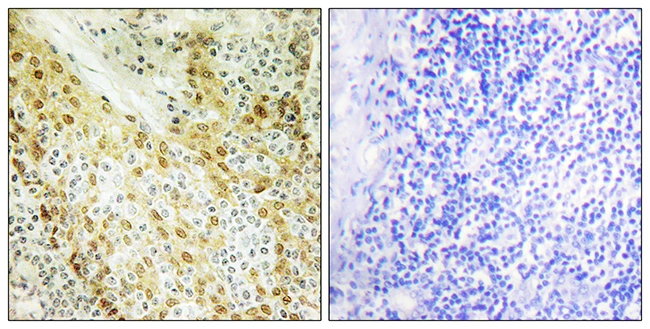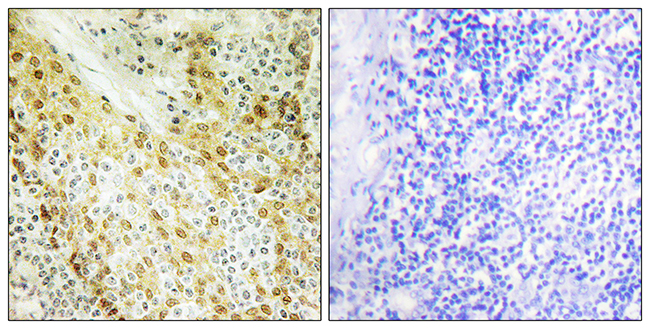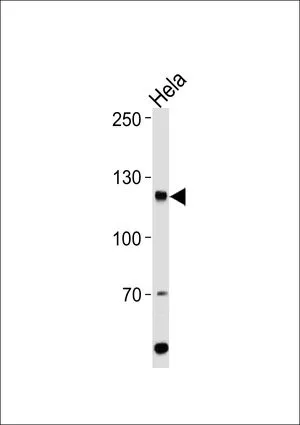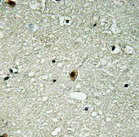
IHC-P analysis of human tonsil tissue using GTX87684 HIRA antibody. The picture on the right is blocked with the synthesized peptide.
HIRA antibody
GTX87684
ApplicationsImmunoHistoChemistry, ImmunoHistoChemistry Paraffin
Product group Antibodies
TargetHIRA
Overview
- SupplierGeneTex
- Product NameHIRA antibody
- Delivery Days Customer9
- Application Supplier NoteIHC-P: 1:50~1:100. *Optimal dilutions/concentrations should be determined by the researcher.Not tested in other applications.
- ApplicationsImmunoHistoChemistry, ImmunoHistoChemistry Paraffin
- CertificationResearch Use Only
- ClonalityPolyclonal
- ConjugateUnconjugated
- Gene ID7290
- Target nameHIRA
- Target descriptionhistone cell cycle regulator
- Target synonymsDGCR1; DiGeorge critical region gene 1; HIR histone cell cycle regulation defective homolog A; histone regulator A; protein HIRA; TUP1; TUP1-like enhancer of split protein 1; TUPLE1
- HostRabbit
- IsotypeIgG
- Protein IDP54198
- Protein NameProtein HIRA
- Scientific DescriptionThis gene encodes a histone chaperone that preferentially places the variant histone H3.3 in nucleosomes. Orthologs of this gene in yeast, flies, and plants are necessary for the formation of transcriptionally silent heterochomatin. This gene plays an important role in the formation of the senescence-associated heterochromatin foci. These foci likely mediate the irreversible cell cycle changes that occur in senescent cells. It is considered the primary candidate gene in some haploinsufficiency syndromes such as DiGeorge syndrome, and insufficient production of the gene may disrupt normal embryonic development. [provided by RefSeq, Jul 2008]
- Storage Instruction-20°C or -80°C,2°C to 8°C
- UNSPSC12352203






